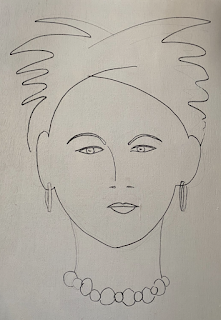Supper in Little India
By the time the day of teaching is over, we are all done in. W suggests an evening trip to Little India and plans the routes there and back. The kids are still jet-lagged, so they nap in the flat for an hour before we head out to the bus stop. It’s a downhill walk of about half a kilometer to catch Bus 3.
Our bus winds round to the light rapid transit (train/MRT) station, where we catch the train downtown. The trip lasts about an hour. We last ate at lunch, so all of us are hungry: it’s after 8pm when we sit down to a vegetarian meal. We haven’t spent much time thinking about where we want to eat, but most places have great food and we enter the first open door.
We wash our hands at the sinks at the back of the restaurant. Kirsten and I each order a South India platter - $5US for a heaping portion of rice accompanied by three sides, two soups, raita (yoghurt), pickled mango, Indian coleslaw, and a sweet rice/raisin/peanut pudding. Oh yes, there’s mango or lime juice thrown in. The guys choose the North India platter, with about the same amount of food but different flavors.
There are no forks, although we have a small plastic spoon for sauces and the soup. Each person’s food sits on a cut (15”X20”) banana leaf. We scoop rice with our right hand, mix it with the sides, and push it into our mouths with our thumbs. Kirsten and I are messy: our fingers are full of rice. W and Jono just wipe their fingers on a small napkin afterwards. None of us can finish – the flavors are sweet, savory, spicy, salty, sour… and everything is delicious. But there is simply too much of it, especially this late in the evening.
Beside us, a family from Mumbai is on vacation – Grandpa, Grandma, Mom and Dad, and 1 ½ yrear old Junior, who is refusing to eat. They coax a few bites into him, but he’s more interested in the weird-looking white people beside him. He chatters, and we have a nice conversation with the family. The young mom (29) has been an engineering professor at a university for 5 years. She is bright, articulate, and her English is very good. Her folks are proud of her and happy to be on holiday to watch the family’s little treasure. Her husband disappears after he eats, and hasn’t returned in the half-hour after.
We hit the street, “If I can find earrings I’ll be happy,” says Kirsten. We walk for blocks, past open and closed shop-fronts with crowded wares piled to the streets. The narrow sidewalks between goods go up and down; you have to watch your feet to catch the steps and slopes. The guys buy shorts, I find a mumu-like housecoat for when we will share the flat next week. Kirsten and I find the costume jewelry shop where we shopped 4 years ago. “Mom, look at these!” Kirsten finds a few sets of earrings in the thousands of packets of bright baubles and gold and silver wires hung on the walls.
After 10.30pm we cross the street to the bus stop, but our double-decker pulls away when we are 50 feet from the stop. The next possibility arrives in 15 minutes to take us back across the quieting streets to the Tampines transit center. 24 bus routes and the commuter trains (MRT) converge at the Tampines Interchange. Bus drivers take their breaks at the interchange, and reset schedules. Our #3 bus pulls into the station a few minutes after we get to the bus stop. It drops off passengers and then pulls away into a holding bay for the driver’s break. He loops back around for us 15-20 minutes later.
“Won’t be long now,” promises W. Except he has never taken this route, in which the bus winds around the neighborhoods. Jonathan nods off before we arrive at our stop a few miles and ¾ hour later. Kirsten, who has arthritis, is a trooper about the trudge home. We're all glad to unlock the door when we get home at midnight.


